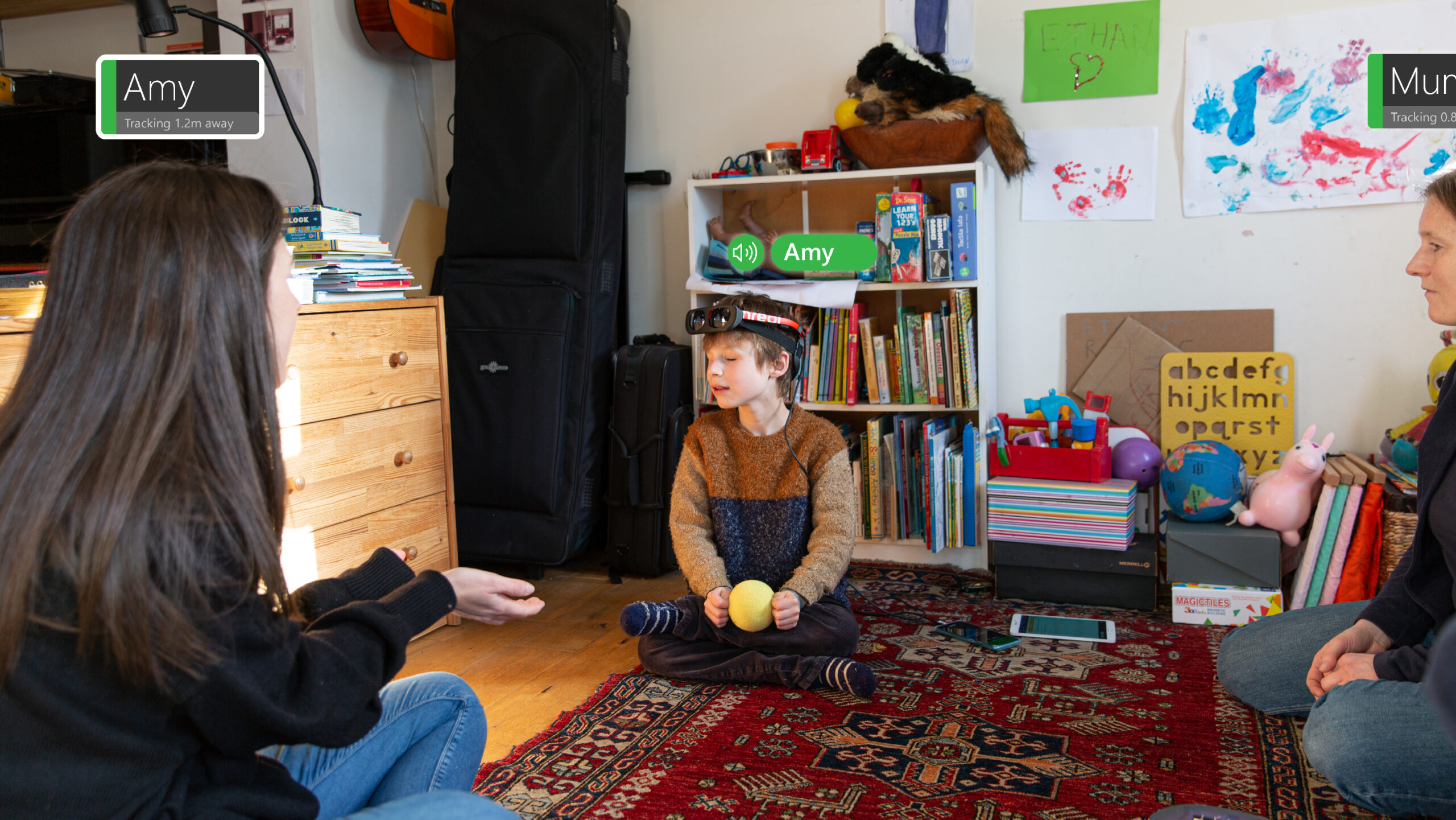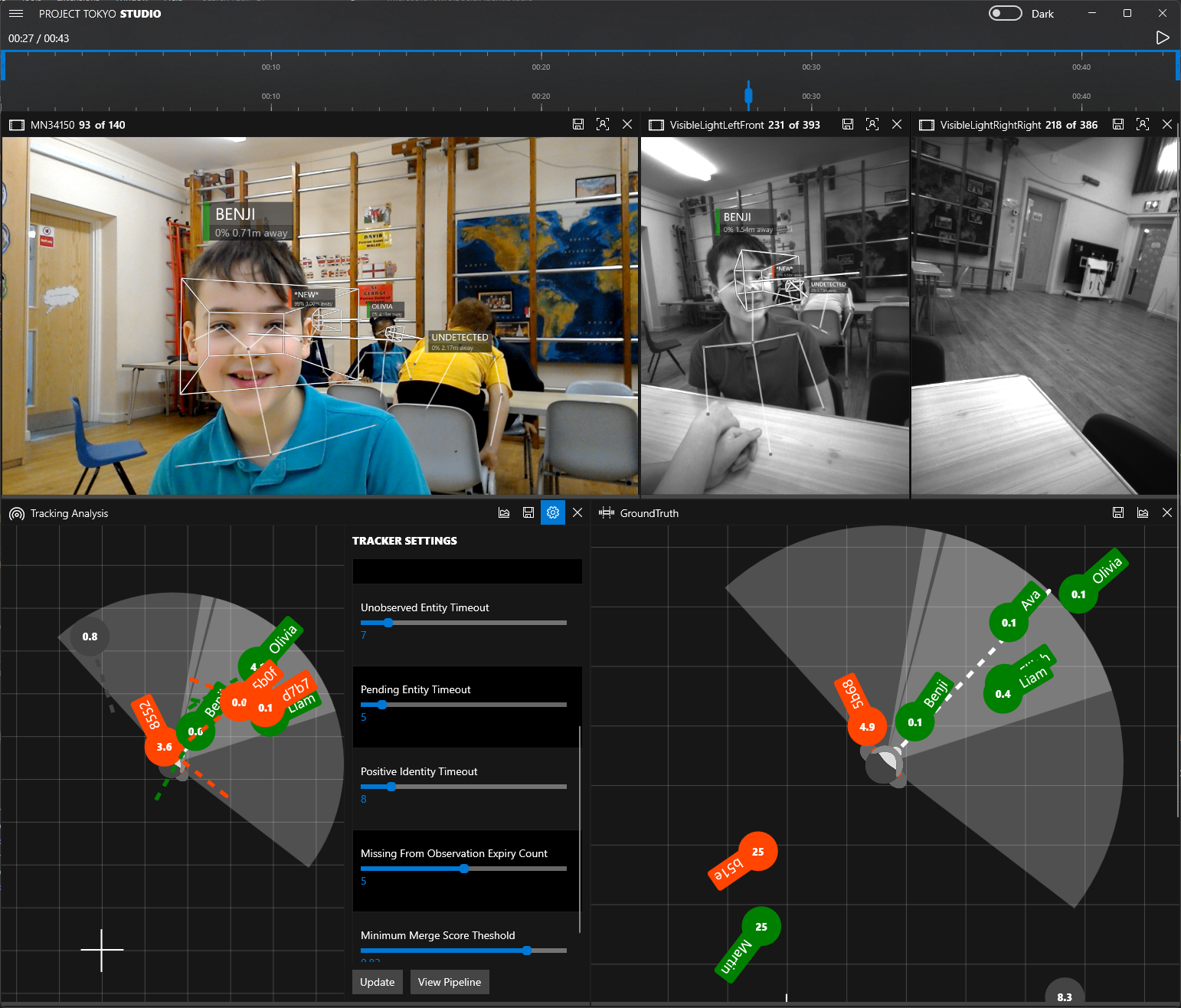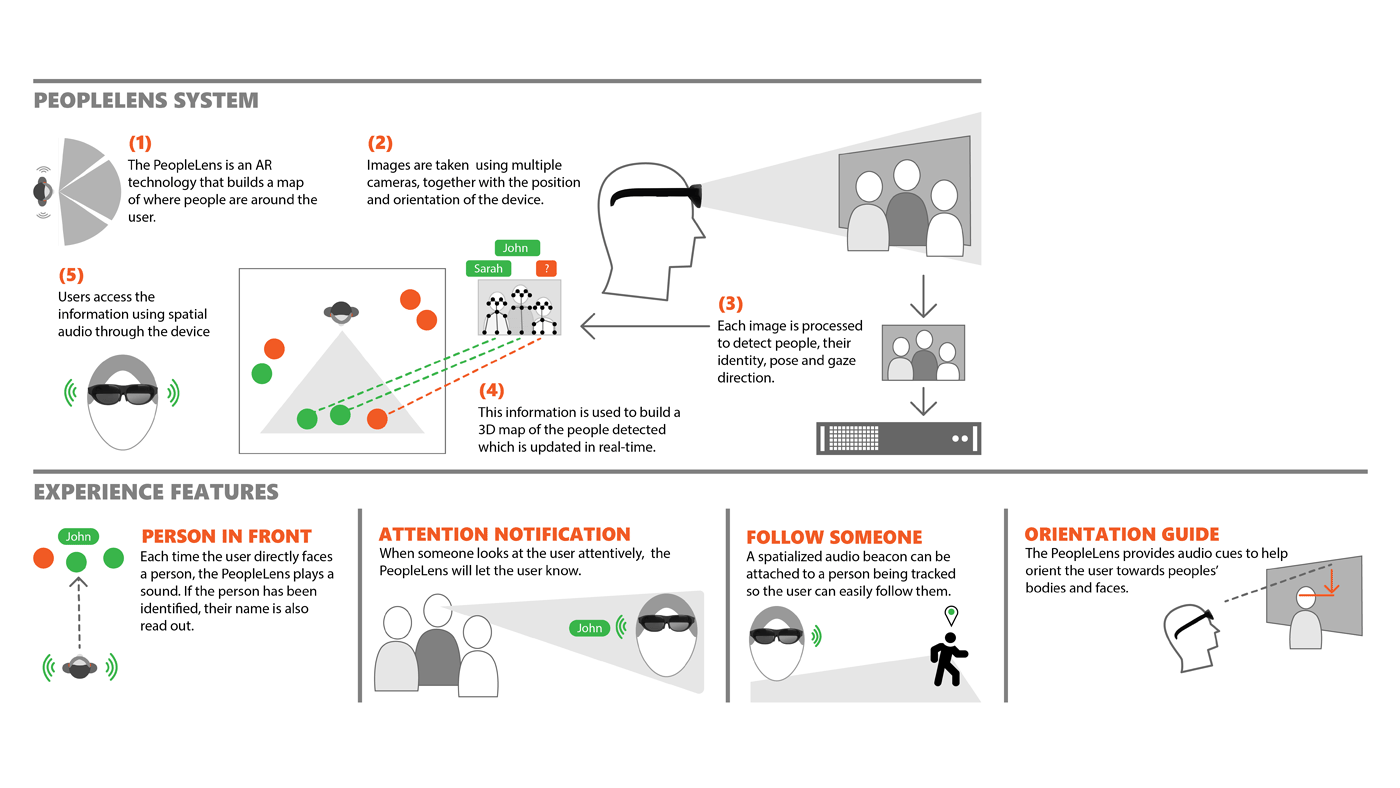
For children born blind, social interaction can be particularly challenging. A child may have difficulty aiming their voice at the person they’re talking to and put their head on their desk instead. Linguistically advanced young people may struggle with maintaining a topic of conversation, talking only about something of interest to them. Most noticeably, many children and young people who are blind struggle with engaging and befriending those in their age group despite a strong desire to do so. This is often deeply frustrating for the child or young person and can be equally so for their support network of family members and teachers who want to help them forge these important connections.
-
PUBLICATION
PeopleLens
The PeopleLens is an open-ended AI system that offers people who are blind or who have low vision further resources to make sense of and engage with their immediate social surroundings.
The PeopleLens is a new research technology that we’ve created to help young people who are blind (referred to as learners in our work) and their peers interact more easily. A head-worn device, the PeopleLens reads aloud in spatialized audio the names of known individuals when the learner looks at them. That means the sound comes from the direction of the person, assisting the learner in understanding both the relative position and distance of their peers. The PeopleLens helps learners build a People Map, a mental map of those around them needed to effectively signal communicative intent. The technology, in turn, indicates to the learner’s peers when the peers have been “seen” and can interact—a replacement for the eye contact that usually initiates interaction between people.
For children and young people who are blind, the PeopleLens is a way to find their friends; however, for teachers and parents, it’s a way for these children and young people to develop competence and confidence in social interaction. An accompanying scheme of work aims to guide the development of spatial attention skills believed to underpin social interaction through a series of games that learners using the PeopleLens can play with peers. It also sets up situations in which learners can experience agency in social interaction. A child’s realization that they can choose to initiate a conversation because they spot someone first or that they can stop a talkative brother from speaking by looking away is a powerful moment, motivating them to delve deeper into directing their own and others’ attention.
The PeopleLens is an advanced research prototype that works on Nreal Light augmented reality glasses tethered to a phone. While it’s not available for purchase, we are recruiting learners in the United Kingdom aged 5 to 11 who have the support of a teacher to explore the technology as part of a multistage research study. For the study, led by the University of Bristol, learners will be asked to use the PeopleLens for a three-month period beginning in September 2022. For more information, visit the research study information page.
Research foundation
The scheme of work, coauthored by collaborators Professor Linda Pring and Dr. Vasiliki Kladouchou, draws on research and practice from psychology and speech and language therapy in providing activities to do with the technology. The PeopleLens builds on the hypothesis that many social interaction difficulties for children who are blind stem from differences in the ways children with and without vision acquire fundamental attentional processes as babies and young children. For example, growing up, children with vision learn to internalize a joint visual dialogue of attention. A young child points at something in the sky, and the parent says, “Bird.” Through these dialogues, young children learn how to direct the attention of others. However, there isn’t enough research to understand how joint attention manifests in children who are blind. A review of the literature suggests that most research doesn’t account for a missing sense and that research specific to visual impairment doesn’t provide a framework for joint attention beyond the age of 3. We’re carrying out research to better understand how the development of joint attention can be improved in early education and augmented with technology.
How does the PeopleLens work?
The PeopleLens is a sophisticated AI prototype system that is intended to provide people who are blind or have low vision with a better understanding of their immediate social environment. It uses a head-mounted augmented reality device in combination with four state-of-the-art computer vision algorithms to continuously locate, identify, track, and capture the gaze directions of people in the vicinity. It then presents this information to the wearer through spatialized audio—sound that comes from the direction of the person. The real-time nature of the system gives a sense of immersion in the People Map.

The PeopleLens is a ground-breaking technology that has also been designed to protect privacy. Among the algorithms underpinning the system is facial recognition of people who’ve been registered in the system. A person registers by taking several photographs of themselves with the phone attached to the PeopleLens. Photographs aren’t stored, instead converted into a vector of numbers that represent a face. These differ from any vectors used in other systems, so recognition by the PeopleLens doesn’t lead to recognition by any other system. No video or identifying information is captured by the system, ensuring that the images can’t be maliciously used.
The system employs a series of sounds to assist the wearer in placing people in the surrounding space: A percussive bump indicates when their gaze has crossed a person up to 10 meters away. The bump is followed by the person’s name if the person is registered in the system, is within 4 meters of the wearer, and both the person’s ears can be detected. The sound of woodblocks guides the wearer in finding and centering the face of a person the system has seen for 1 second but hasn’t identified, changing in pitch to help the wearer adjust their gaze accordingly. (Those people who are unregistered are acknowledged with a click sound.) Gaze notification can alert the wearer to when they’re being looked at.

Community collaboration
The success of the PeopleLens, as well as systems like it, is dependent on a prototyping process that includes close collaboration with the people it is intended to serve. Our work with children who are blind and their support systems has put us on a path toward building a tool that can have practical value and empower those using it. We encourage those interested in the PeopleLens to reach out about participating in our study and help us further evolve the technology.
To learn more about the PeopleLens and its development, check out the Innovation Stories blog about the technology.
The post PeopleLens: Using AI to support social interaction between children who are blind and their peers appeared first on Microsoft Research.
